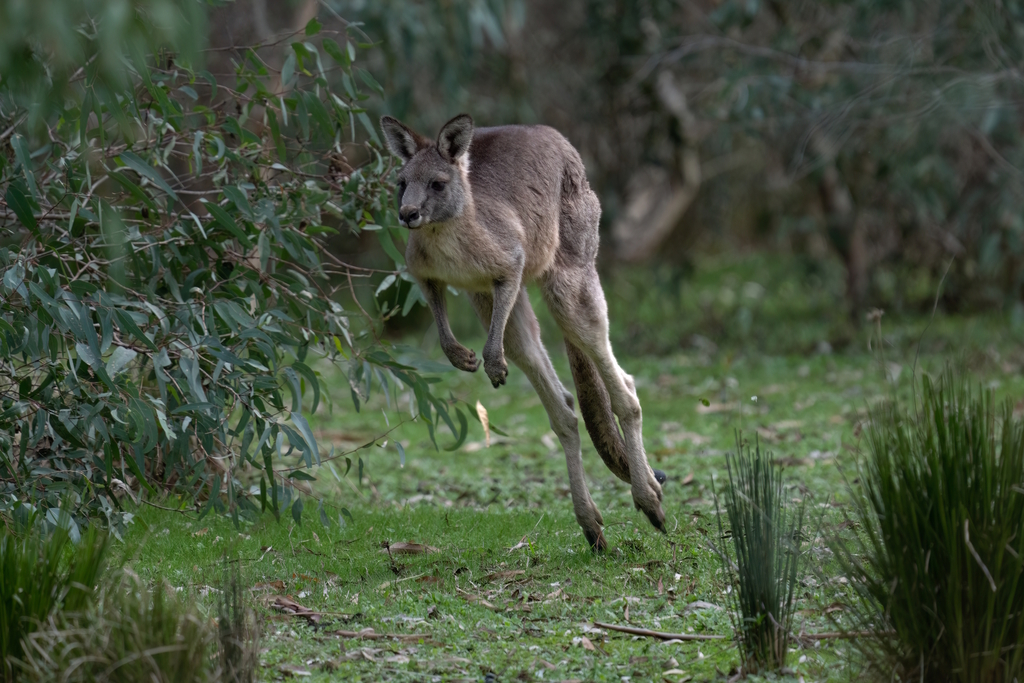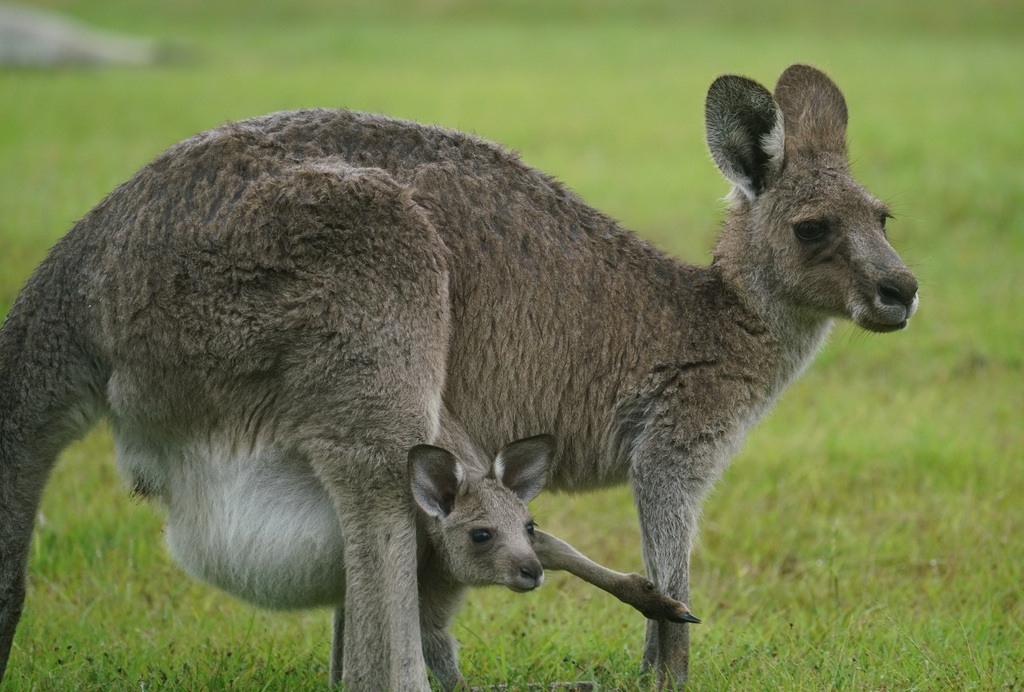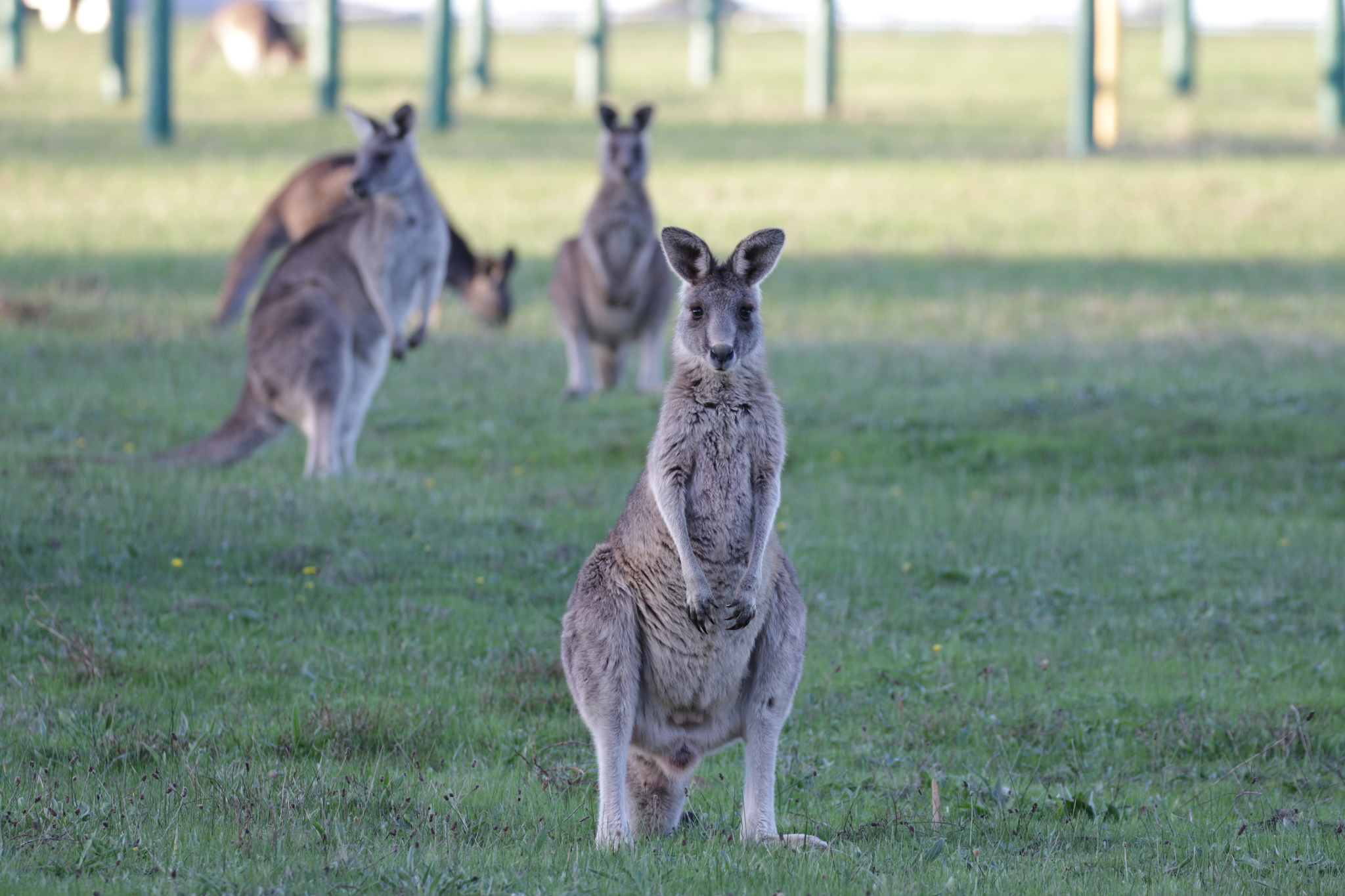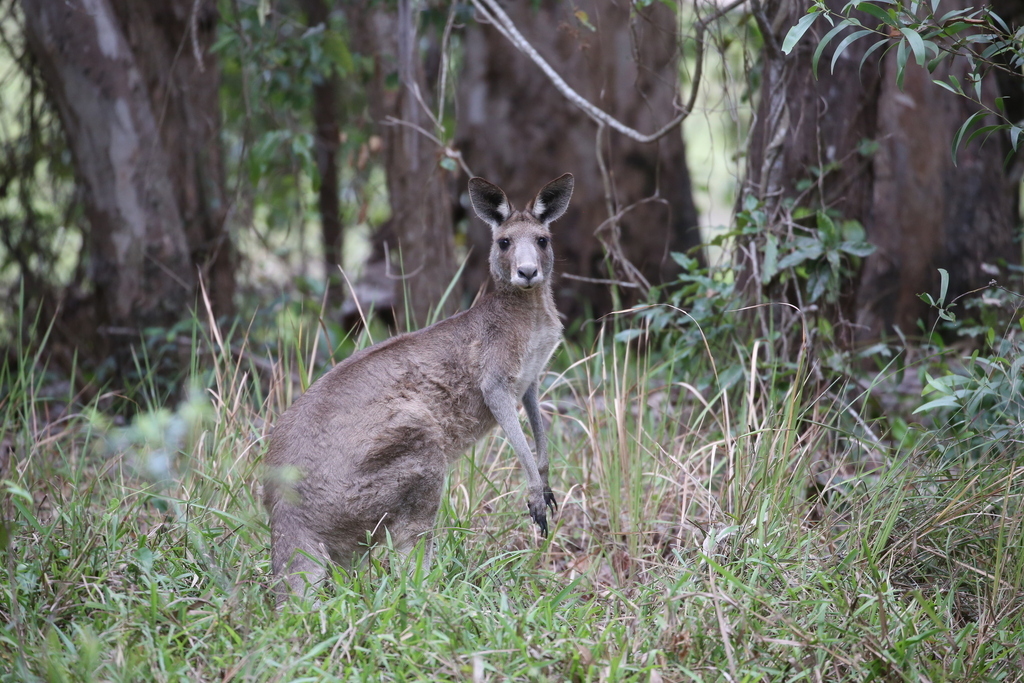Behaviour
Movement
Eastern Grey Kangaroos are social and sometimes live in ‘mobs’ of up to 50 individuals. They are most active at night, dusk, and dawn where they graze on various grasses and plants. During the day, they will shelter under trees or scrubs.
Breeding
Breeding occurs continuously throughout the year, but most births occur in summer due to the behavioural conditions.
They have a short pregnancy period of around 36 days, after which the joey remains in the pouch for 9 months. Joeys then begin to leave the pouch but will continue to suckle occasionally. At 18 months, the joey will become fully independent.





